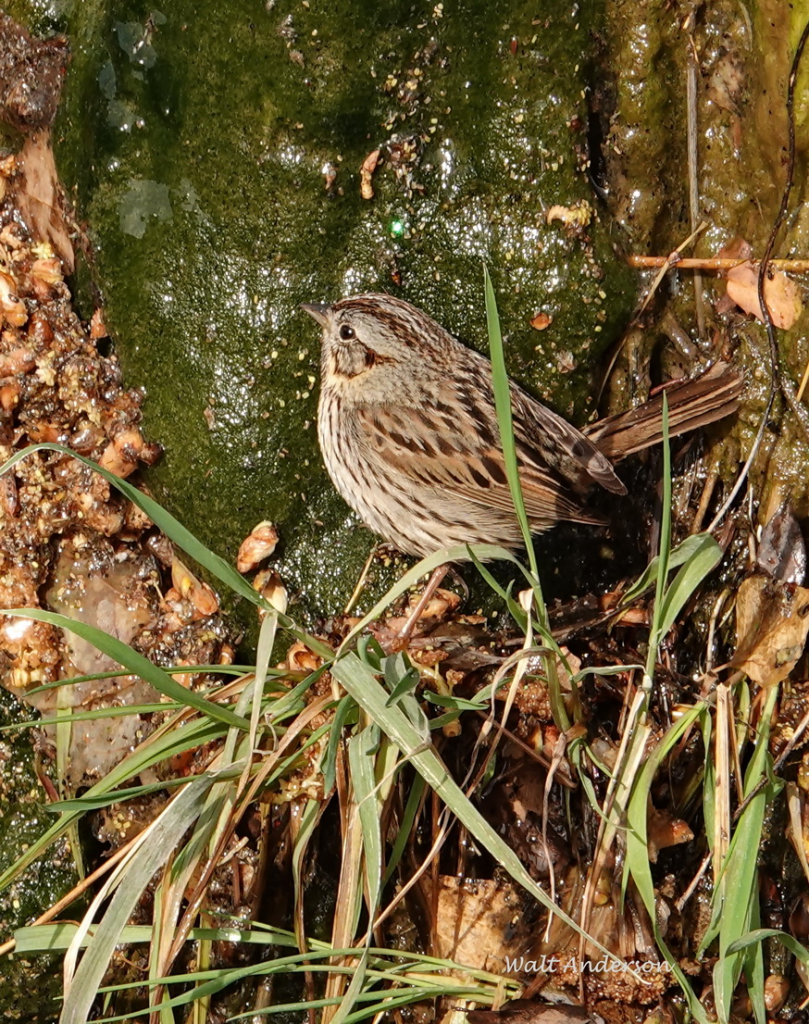
Wild Wednesday. 23 March 2022. Lincoln’s Sparrow
by Walt Anderson
Some songbirds are outright showoffs: think Vermilion Flycatcher, Summer Tanager, Painted Redstart, Mountain Bluebird, Lazuli Bunting. Others are little brown jobs: cryptic with earth tones and subtle stripes. Beginning birders often throw up their binoculars in frustration and call them “sparrow sp.” Mastering sparrows takes a lot of practice, paying attention to habitats, songs or calls, other behaviors, and little details of shape and plumage that give them away—eventually. I want to call attention to one of these rather nondescript but nevertheless beautiful birds—the Lincoln’s Sparrow. Once you become familiar with them, they may become one of your favorites, as they have for me.
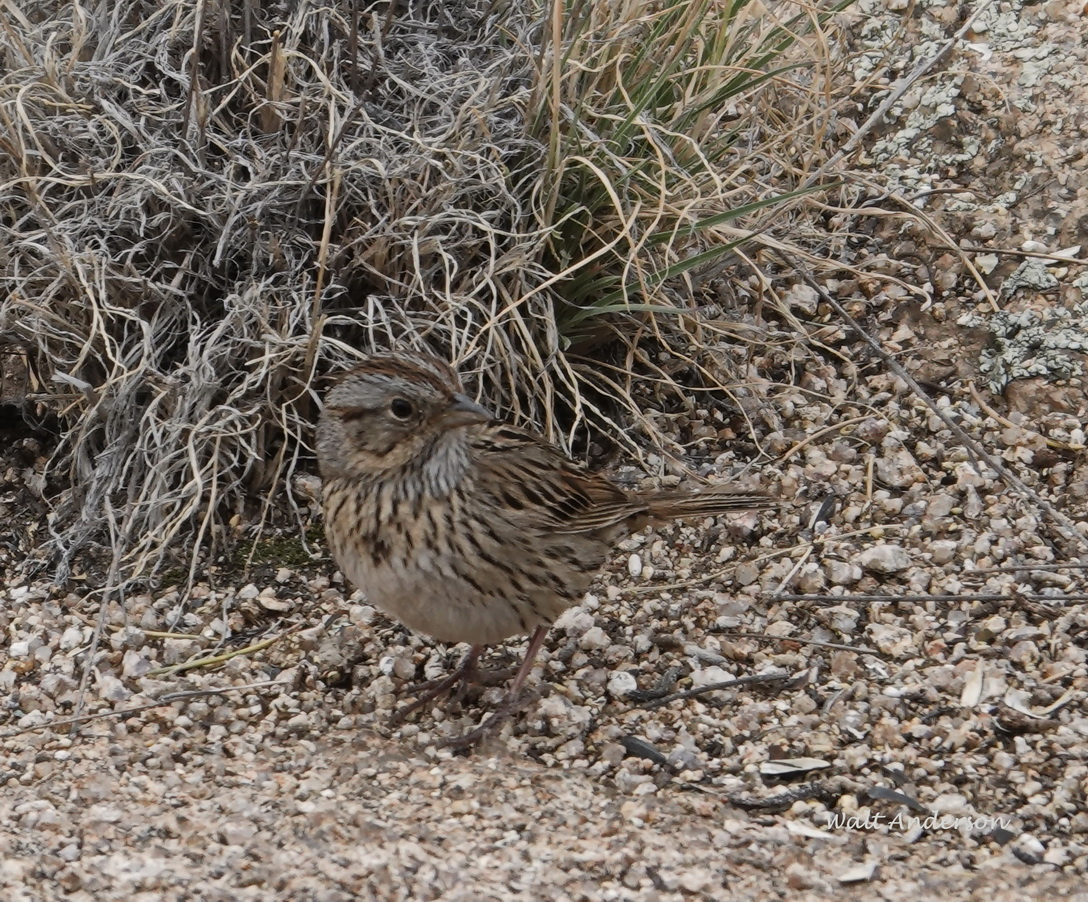
The Lincoln’s Sparrow is an unfortunate victim of patronymic privilege—a species named to commemorate a person instead of for some intrinsic characteristic. In fact, with the “apostrophe-s,” it sounds like this bird belongs to Lincoln, implying possessiveness. There have been some recent moves to replace a name based on an offensive character; McCown’s Longspur is now called Thick-billed Longspur, but many human names continue to be applied. So was this bird named for Abraham Lincoln? Nope. On a collecting expedition to Labrador, J.J. Audubon heard the song of an unfamiliar bird, which his 21-year-old assistant, Thomas Lincoln, managed to shoot. Audubon named it “Tom’s Finch,” Fringilla Lincolnii, after the collector (the individual bird’s assassin). Can’t we do better than that?

Forced to stick with the common name, Lincoln’s Sparrow, I nevertheless am thrilled whenever I get a good look at this rather reclusive, secretive sparrow of dense cover. On their wintering grounds, they tend to be loners, unlike the gregarious White-crowned or Chipping Sparrows. They do respond at times to the “pishing” sound that many birders give to coax hidden birds out of cover. Sometimes in their birding zeal, several birders will engage in pishing contests.

It’s not uncommon for an excited Lincoln’s Sparrow to raise a shaggy crest, totally changing its appearance. The key field marks are a buffy chest and flanks with fine streaking, a buffy jaw stripe, a whitish eyering in a mostly gray face, and a white belly. Some have a dark stickpin on the breast, a field mark often found on Song and Savannah Sparrows too, so don’t rely on it.
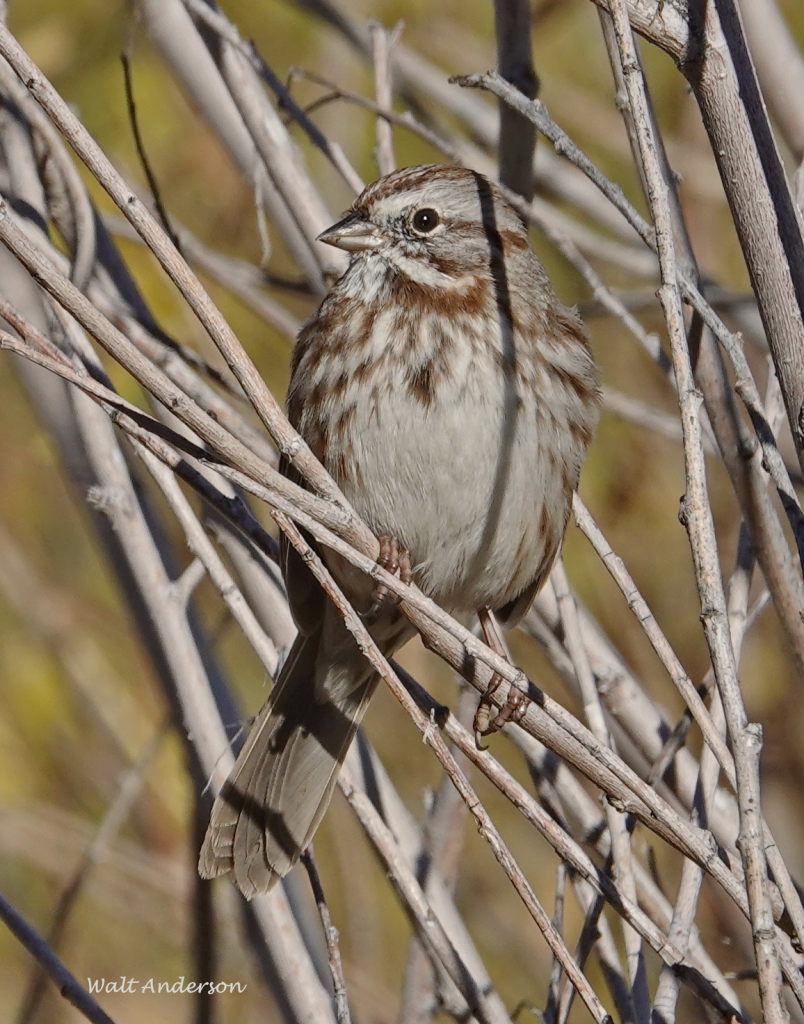
The Song Sparrow, along with the eastern Swamp Sparrow, is in the same genus, Melospiza, as the Lincoln’s Sparrow. It is highly variable, with many races across North America, but it is usually more robust, without the buffy jaw stripe, breast, and flanks. Its tail tends to be longer. At least it’s not named for its collector!

The Savannah Sparrow shows less gray in the face and lacks the buffy washes found in the Lincoln’s Sparrow. See how easy it is to tell them all apart? Oh, yes; there are probably a dozen or more other sparrow species that might challenge you. But don’t worry—they are easier to identify than some of the small flycatchers!

In most of central and southern Arizona, the Lincoln’s Sparrow is a winter visitor.
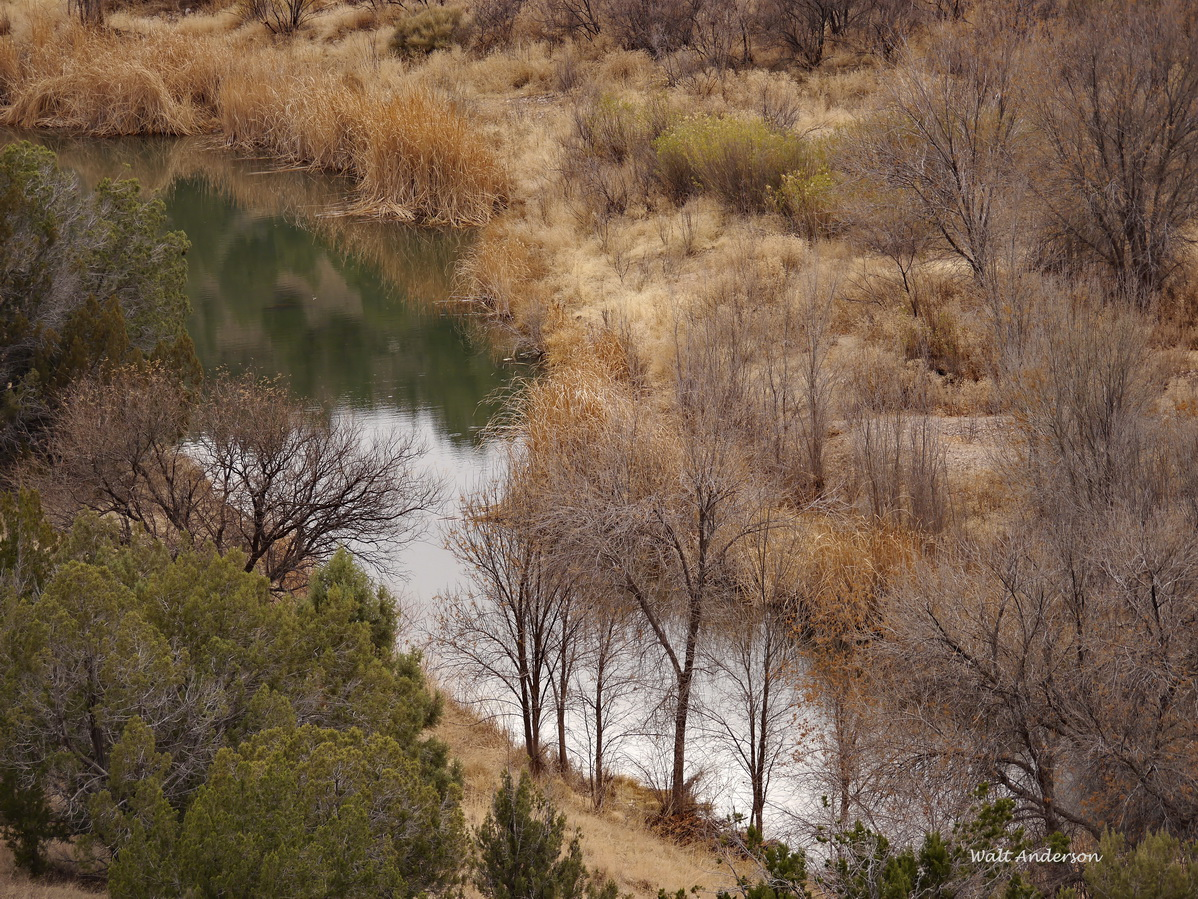
Often they are in brushy sites like this one along the Upper Verde River. They do overlap a bit with the Song Sparrow in the winter, though Songs prefer the cattails to a great extent than the Lincoln’s do. By March and April, they are on the move north, flying at night, toward their boreal nesting grounds.

Lincoln’s Sparrows breed across the full breadth of boreal forest on the continent, from Alaska to the maritime provinces of Canada. Their breeding range extends down along the Pacific Coast in the mountains and down the Rockies (like this site in Rocky Mountain National Park in Colorado) to southcentral New Mexico. They are a riparian species, loving dense willow and dwarf birch thickets, often with spruces and aspens.

There are isolated Arizona breeding populations in the San Francisco Peaks near Flagstaff and in the White Mountains, like this site along the South Fork of the Little Colorado River. Males will sit high in the thickets to advertise with their lovely songs, described as “rich, warbling, wrenlike.” They are monogamous, essentially identical (which has hampered studies trying to distinguish male and female behaviors). If disturbed from her nest, the female scurries off low to the ground like a mouse.

On the breeding grounds, Lincoln’s Sparrows feed primarily on insects, but their winter diet is dominated by seeds. They will take seeds scattered by humans (like me) on the ground, but they won’t use an elevated feeder. If they can find insects active on their wintering grounds, they will readily take them, as this bird is doing on the dripping vertical face of Fain Park dam in Prescott Valley.
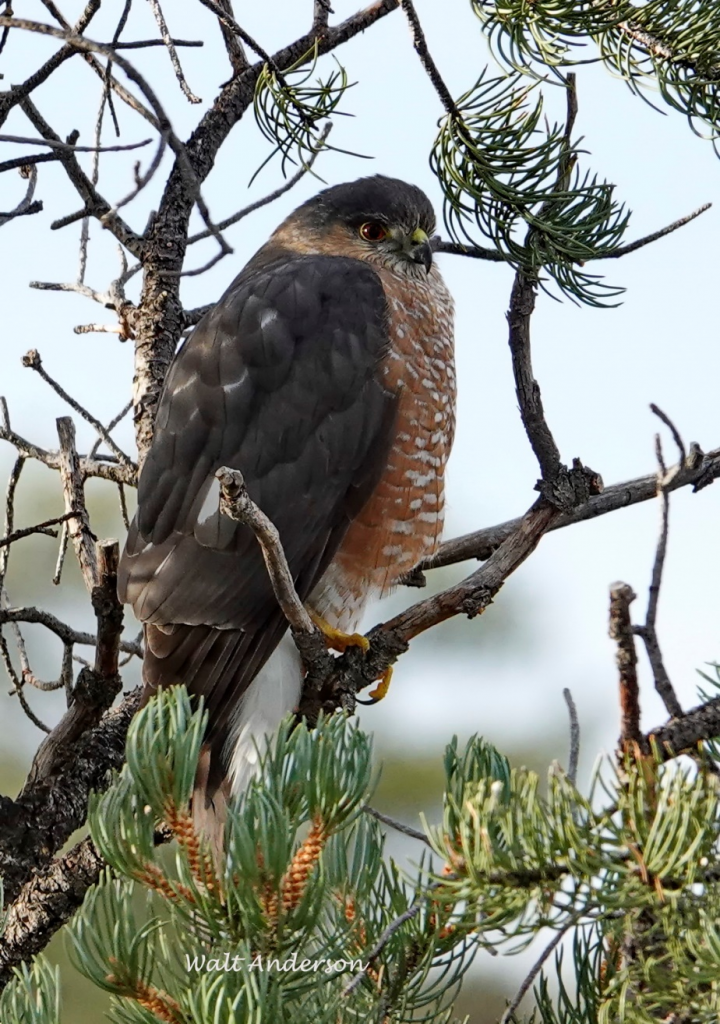
Their primary predators are Sharp-shinned Hawks, shrikes, weasels, and cats (something that would be entirely avoidable if we kept cats indoors). Climate change is predicted to reduce boreal forests and higher-elevation wetlands in the Rockies and Sierra Nevada, and forest fires are burning more and more of those forests annually. Huge habitat losses are attributable to logging boreal forests (about a million acres per year!) for toilet paper and the like (do not fall for Charmin’s greenwashing ads that they are good for the environment!). In fact, many well-known brands get an F grade by the Natural Resources Defense Council: Cottonelle Ultra (Kimberly-Clark), Scott 1000 (Kimberly-Clark), Scott ComfortPlus (Kimberly-Clark, Charmin Ultra (Procter & Gamble), Kirkland (Costco), Angel Soft (Georgia-Pacific), Quilted Northern (Georgia-Pacific), Up & Up Soft & Strong (Target), Presto (Amazon), Solimo (Amazon), Aria (Georgia-Pacific), Quilted Northern EcoComfort (Georgia-Pacific), Fiora (Asia Pulp and Paper). “EcoComfort”? What gall! See this article for better choices; we can help: Report Exposes How Sustainable 26 Major Toilet Paper Brands Are.
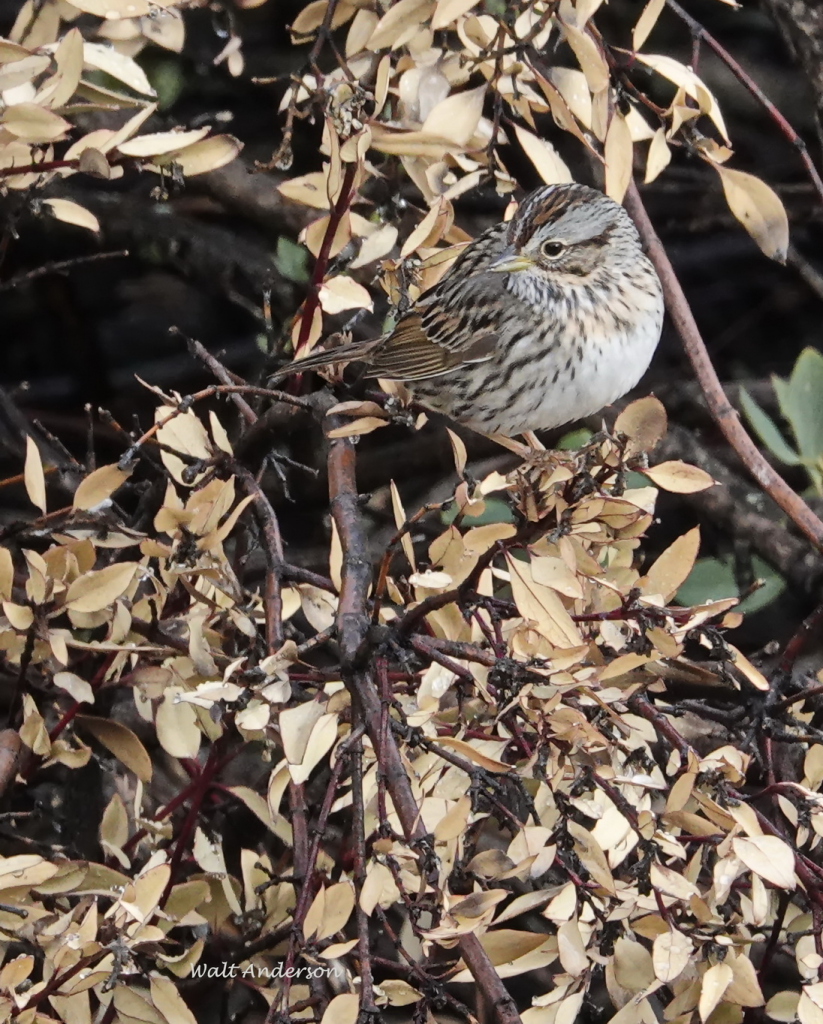
I love Lincoln’s Sparrows, and seeing them connects me to the boreal forest and high-mountain wetlands. They are an example of how human activities that are out-of-sight, out-of-mind are destroying wildlife habitat and also impacting indigenous peoples who rely on livelihoods and traditions in the boreal forest. We need to be aware of where our goods and services come from—what are the ecological costs of our purchases? As the unwarranted attacks in Ukraine are reminding us, we live in one world. We are all interconnected, which is one of the basic tenets of ecology. There are various biblical and literary references to “the sparrow’s fall.” Let us not through ignorance or apathy contribute to the sparrow’s fall or any other environmental calamity that could be avoided if we were wise stewards of the land.
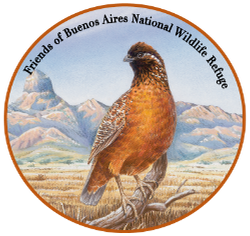
Ive been told Lincoln sparrows DO NOT breed in Missouri when one site states thats one if our 23 forms of species if sparrows. Please clear the up. We saw one. I’m a new bird watcher in a group.